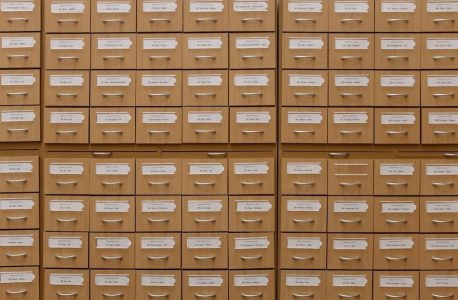The Economic Order Quantity (EOQ) model minimizes inventory costs by balancing ordering and carrying costs, providing an optimal order size for businesses to reduce expenses effectively.
Definition and Importance of EOQ
The Economic Order Quantity (EOQ) is a widely used inventory management model that determines the optimal order size to minimize total inventory costs. It balances the costs of ordering (e.g., procurement and logistics) and carrying (e.g., storage and maintenance) to achieve cost efficiency. The EOQ formula, derived from the trade-off between these costs, helps businesses avoid overstocking and stockouts. By identifying the ideal order quantity, EOQ enhances cash flow, reduces waste, and improves operational efficiency. Its importance lies in providing a data-driven approach to inventory optimization, making it a cornerstone of supply chain management across industries like retail, manufacturing, and wholesale.
EOQ Formula and Basic Concepts
The EOQ formula is calculated as EOQ = √(2DS/H), where D represents annual demand, S is the ordering cost per purchase, and H is the holding cost per unit. This formula identifies the optimal order quantity that minimizes total inventory costs. Key concepts include demand, ordering costs, and carrying costs. Demand is the annual requirement of the product, while ordering costs encompass procurement expenses. Carrying costs include storage and maintenance fees. By applying this formula, businesses can determine the ideal order size, reducing excess inventory and unnecessary expenses. Understanding these components is essential for effective inventory management and cost optimization in various industries.

Basic EOQ Problems and Solutions
Common EOQ problems involve calculating optimal order quantities using annual demand, ordering costs, and carrying costs. Solutions demonstrate how EOQ minimizes total inventory expenses effectively.
Problem 1: Calculating EOQ with Annual Consumption and Ordering Costs
A company requires 6,000 units annually, with an ordering cost of Rs. 60 per order and carrying costs of Rs. 2 per unit. To find the EOQ, use the formula:
EOQ = √(2 * Annual Consumption * Ordering Cost / Carrying Cost) = √(2 * 6000 * 60 / 2) = √(360000) = 600 units.
This means the company should order 600 units per batch to minimize total inventory costs. The solution demonstrates how EOQ balances ordering and carrying expenses effectively.
Problem 2: EOQ Calculation with Carrying Costs and Ordering Costs
A company has an annual requirement of 1,600 units, with a material cost of Rs. 40 per unit, an ordering cost of Rs. 50 per order, and a 10% annual carrying cost. To find the EOQ:
EOQ = √(2 * 1600 * 50 / (0.10 * 40)) = √(160000 / 4) = √40000 = 200 units.
Total annual inventory cost = (1600 / 200) * 50 + (200 / 2) * (0.10 * 40) = 400 + 400 = Rs. 800.
Thus, the optimal order quantity is 200 units, minimizing total inventory costs to Rs. 800 annually.

Intermediate EOQ Problems
These problems involve calculating EOQ with carrying costs as a percentage of unit cost and considering lead time for inventory replenishment, enhancing decision-making accuracy in supply chain management.
Problem 3: EOQ with Carrying Costs as a Percentage of Unit Cost
A company forecasts an annual demand of 10,000 units, with a unit cost of $50; The ordering cost is $100 per order, and carrying costs are 20% of the unit cost. To calculate the EOQ, use the formula:
- EOQ = √(2 * Annual Demand * Ordering Cost / Carrying Cost)
- Carrying Cost = Unit Cost * Carrying Cost Percentage = $50 * 20% = $10
- EOQ = √(2 * 10,000 * $100 / $10) = √(200,000) = 447 units
Optimal order quantity is 447 units, minimizing total inventory costs efficiently.
Problem 4: EOQ Calculation with Lead Time Considerations
A retailer requires 12,000 units annually, with an ordering cost of $150 and a carrying cost of $5 per unit. Lead time is 15 days, and daily demand is 32.8 units. The EOQ is calculated as:
- EOQ = √(2 * 12,000 * $150 / $5) ≈ 1,095 units
- Reorder Point = Lead Time Demand = 15 * 32.8 ≈ 492 units
Ordering 1,095 units minimizes costs, ensuring stockouts are avoided by reordering at 492 units. Lead time considerations ensure continuous supply chain efficiency.
Advanced EOQ Problems
Advanced EOQ problems involve handling multiple items with varying demand rates and time-varying demand, incorporating shortage costs for optimal inventory management solutions in various industries.
Problem 5: EOQ for Multiple Items with Varying Demand Rates
Calculating EOQ for multiple items with varying demand rates involves determining the optimal order quantity for each item separately, considering their unique demand patterns and costs. This approach ensures that inventory management is tailored to each item’s specific needs, leading to more efficient ordering and reduced overall costs. By applying the EOQ formula individually, businesses can maintain optimal stock levels and minimize both ordering and holding costs across their product range.
Problem 6: EOQ with Time-Varying Demand and Shortage Costs
When demand varies over time and shortage costs are incurred, calculating EOQ becomes more complex. This scenario often arises in seasonal industries or businesses with fluctuating demand patterns. To address this, the EOQ formula is adapted to account for time-varying demand rates and incorporate shortage costs. The optimal order quantity is determined by balancing the increased holding costs of excess inventory against the additional expenses of stockouts. This advanced approach ensures that businesses maintain sufficient stock levels during peak demand periods while minimizing the financial impact of shortages. It is particularly useful for industries where demand unpredictability and shortage penalties are significant concerns.

Real-World Applications of EOQ
EOQ is widely applied in retail and manufacturing to optimize inventory levels, reduce costs, and improve efficiency. Clothing stores and production runs benefit significantly from EOQ models.
EOQ in Retail: Clothing Store Inventory Management
Clothing stores use EOQ to optimize inventory levels, balancing ordering and carrying costs. By calculating the ideal order quantity, retailers avoid stockouts and excess inventory, ensuring timely restocking of popular items. This approach minimizes holding costs and prevents markdowns on unsold stock. For example, a store forecasting 10,000 units annual demand with ordering costs of $50 and carrying costs of $5 per unit can determine the optimal order size. Implementing EOQ reduces operational expenses, improves cash flow, and enhances customer satisfaction by maintaining stock availability. This strategy is particularly effective in the fashion industry, where trends change rapidly and inventory turnover is crucial.
EOQ in Manufacturing: Production Run Optimization
The EOQ model is essential in manufacturing for determining the optimal production batch size, balancing setup costs and inventory carrying costs. Manufacturers use EOQ to avoid excessive production runs, which can lead to high holding costs and obsolete inventory. For example, a company producing 50,000 units annually with setup costs of $200 and holding costs of $4 per unit can calculate the ideal batch size. By implementing EOQ, manufacturers reduce production downtime, minimize storage requirements, and ensure a steady supply of materials. This approach improves production scheduling, reduces waste, and enhances overall operational efficiency, making it a cornerstone of cost-effective manufacturing strategies.

EOQ Model Variations and Extensions
EOQ models adapt to various scenarios, including quantity discounts, deteriorating items, and time-varying demand, enhancing their applicability in dynamic business environments with specific inventory challenges.
EOQ with Quantity Discounts and Price Breaks
EOQ models can incorporate quantity discounts, where suppliers offer lower unit prices for larger orders. This extension adjusts the EOQ formula to account for price breaks, optimizing order quantities while considering reduced unit costs at higher volumes. For example, if purchasing 100 units costs $10 each but 200 units cost $9 each, the EOQ calculation must weigh the benefits of lower prices against increased carrying costs. Marginal analysis is used to determine the optimal order size that maximizes savings without excessive inventory holding expenses. This variation is particularly useful in scenarios where suppliers offer tiered pricing structures, helping businesses make cost-effective purchasing decisions. Proper application ensures companies balance economies of scale with inventory management efficiency.
EOQ for Deteriorating Items and Perishable Goods
EOQ models for deteriorating or perishable goods consider the cost of spoilage, obsolescence, or decay, which traditional models often overlook. These items, such as food or pharmaceuticals, lose value over time, requiring adjustments to the EOQ formula. The optimal order quantity must balance ordering costs, carrying costs, and the additional costs of deterioration. For example, a retailer selling perishable goods might calculate EOQ by incorporating a decay rate or time-based depreciation. This ensures inventory levels align with demand while minimizing waste and excess holding costs. Advanced models may also consider time-varying demand or seasonal factors to optimize inventory management for such items effectively.

Practice Problems and Solutions
Explore practical EOQ problems with real-world applications, such as inventory management for retailers and manufacturers, to understand optimal ordering strategies and cost minimization techniques effectively.
Problem 7: EOQ for Raw Materials with Quarterly Demand
A manufacturing firm requires 24,000 units of raw material annually, with orders placed quarterly. The ordering cost is $50 per order, and the carrying cost is 20% of the unit cost. Using the EOQ formula, calculate the optimal order quantity and number of orders.
Solution:
Annual demand (D) = 24,000 units.
Ordering cost (S) = $50.
Carrying cost (H) = 20% of unit cost.
EOQ = √(2DS/H) = √(224,00050/20) = √(120,000) = 346 units.
Number of orders = 24,000/346 ≈ 7 orders.
This approach minimizes inventory costs and ensures efficient raw material management.
Problem 8: EOQ for Finished Goods with Seasonal Demand
A clothing store faces seasonal demand, requiring 10,000 units annually. The ordering cost is $100 per order, and carrying cost is 30% of the unit cost ($20 per unit). Calculate the EOQ and total inventory costs.
Solution:
Annual demand (D) = 10,000 units.
Ordering cost (S) = $100.
Carrying cost (H) = 0.3 * $20 = $6.
EOQ = √(2DS/H) = √(210,000100/6) ≈ 577 units.
Number of orders = 10,000/577 ≈ 17 orders.
Total inventory cost = (10,000/577)$100 + (577/2)$6 ≈ $1,736; This optimizes inventory management for seasonal demand.
The EOQ model effectively minimizes inventory costs by optimizing order quantities, proving essential for businesses to manage supplies efficiently across various industries and demand scenarios.
Key Takeaways from EOQ Problems and Solutions
The EOQ model balances ordering and carrying costs to determine the optimal order quantity, minimizing total inventory expenses. Through various problems, it is evident that EOQ applies across industries, from retail to manufacturing. Key insights include understanding demand rates, ordering costs, and carrying costs to compute EOQ effectively. The formula EOQ = √(2DS/H) remains central, where D is annual demand, S is ordering cost, and H is holding cost. Practical examples, such as inventory management in clothing stores or production optimization in manufacturing, demonstrate EOQ’s real-world relevance. Solving these problems highlights the importance of accurate data and adaptability to varying demand scenarios, ensuring efficient inventory management and cost reduction.
Future Applications and Continuous Improvement in Inventory Management
Future applications of EOQ will integrate advanced analytics and AI to predict demand accurately, optimizing order quantities. Dynamic EOQ models will adapt to market changes, enhancing agility. Automation and IoT will streamline inventory tracking, reducing errors. Continuous improvement involves refining EOQ formulas with real-time data, enabling smarter decisions. Organizations will adopt EOQ for perishables and multiple items, expanding its scope. Cross-industry collaboration and digital tools will enhance inventory efficiency, minimizing waste and costs. By combining EOQ with modern technologies, businesses can achieve sustainable growth and operational excellence, ensuring optimal inventory levels and cost savings in an ever-evolving market landscape.

